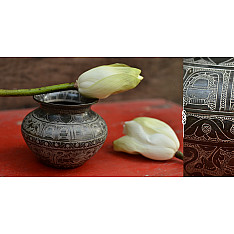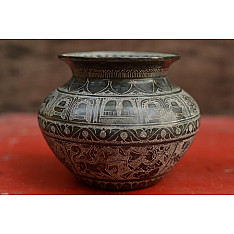- Availability: Out Of Stock
- Made & Mkt by: Mukesh Kumar Soni
- Product Code: 3810-KL-01
- Weight: 800.00g
- Dimensions: 12.00cm x 12.00cm x 9.50cm
The typical dispatch time is 2-3 days; however, in special cases, it may take longer. Please refer to the product details section for specific timelines. Once dispatched, we will share the tracking details with you.
For returns, you can file a request within 24 hours of receiving the product. If the package is damaged, please make a video while unboxing and share images of the damaged item along with your return request.
9328006304 ( WhatsApp )

Khajuraho, the treasure trove of ancient temples, soaked in the beauty of the ideal human form, moments carved in stone and made immortal… This ancient town, famous for its extraordinary temples and the exquisite sculptures that adorn them, also holds within itself, the art of carving enchanting sculptural images in metal.

The abode of god cannot be unadorned, and neither can be their instruments of worship. Temple doors, bells, ‘kalash’ for the holy water of River Ganga and money containers, are all transformed from their plain, utilitarian forms to the ornamental, with the art of engraving practiced by the craftsmen of Khajuraho. Etching and embossing are techniques used to embellish metal for hundreds of years and are still used today in varying aesthetic languages in different places.

Craftsmen of Khajuraho procure brass vessels from Chhatarpur, for garnishing with their drawings. Taking inspirations from the carvings of Khajuraho’s ancient temples, craftsmen draw images directly on the metal vessels. No rough sketches are drawn, no reference guidelines; just the chisel hits the metal and poetry is made onto the golden brown metal. Abstract floral motifs, gods and goddesses, animal figures and the famous erotic sculptures of the temples are brought down from the three dimensional statues and reliefs in the stone temples to lustrous illustrations.

No complicated tools, only a hammer and numerous kinds of chisels in various shapes and sizes are used for creating stories on brass. The quality of the line, whether straight or curved, delicate or strong, all is in the hands of the craftsman who illustrates stories and moments, real and abstract.Textures in the background are made with tiny dots close together, bringing focus on the subjects and their expressions. Decorative borders may be made with curved or diamond shaped chisels.

Once the etching is done, the craftsmen give it a treatment of copper, silver and nitric acid, for an antique finish. The brass turns black after which it is rubbed with a local yellow soil. The mud remains in the etched crevices and the rest is brushed off. The resultant is striking illustrations in sharp yellow relief contrasting against a black background.

The artist has to choose his canvas carefully; steel is too hard and slippery to be etched by hand, while copper’s softness results in a slightly raised, embossed effect. Brass is the right material for this craft, with its strength and malleability. The careful tapping, sketching and texturing of each vessel makes almost a full day’s work. The ancient temples of Khajuraho are perhaps monuments, or relics for tourists, but the rhythmic tapping of chisels on metal in the distance is almost like temple bells ringing and making sonorous music of their own.

The golden age when temples were adorned in pure silver and gold, carved with intricate motifs may be over, but the craft carries on in new forms and reaches the common man today. As brass replaces gold and souvenirs replace utility, craftsmen continue to create beautiful objects out of the mundane with this glistening yellow metal.
| Craftsmen | |
| Made by | Mukesh Kumar Soni |
| Village | Khajuraho (Madhya Pradesh) |
| Returns and Exchange | |
| Note | The products in this category are non refundable. Refund is only applicable in case of defect or damage. |
| Material | |
| Made of | Brass |
| Instruction | |
| Note | As each piece is handmade and unique, please expect a slight variation from shown design. |










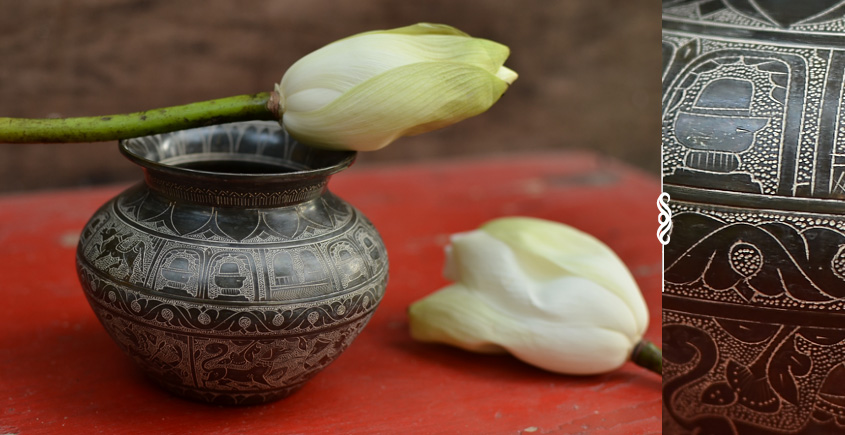






-225x150w.jpg)
-225x150w.jpg)
-225x150w.jpg)
-225x150w.jpg)
-225x150w.jpg)
-225x150w.jpg)
-225x150w.jpg)
-225x150w.jpg)
-225x150w.jpg)
-225x150w.jpg)
-225x150w.jpg)
-225x150w.jpg)
-225x150w.jpg)
-225x150w.jpg)
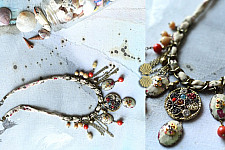
-225x150w.jpg)
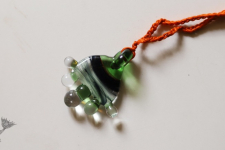
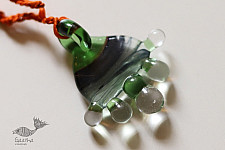
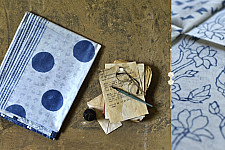
-225x150w.jpg)
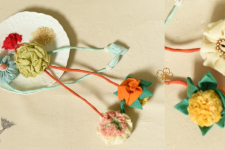
-225x150h.jpg)
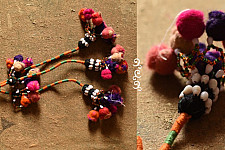
-225x150w.jpg)
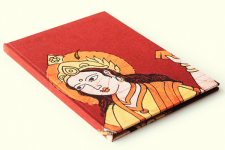
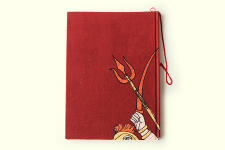
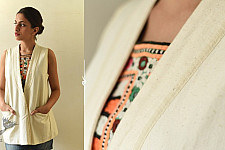
-225x150w.jpg)









-225x150w.jpg)

-225x150w.jpg)

-225x150w.jpg)
